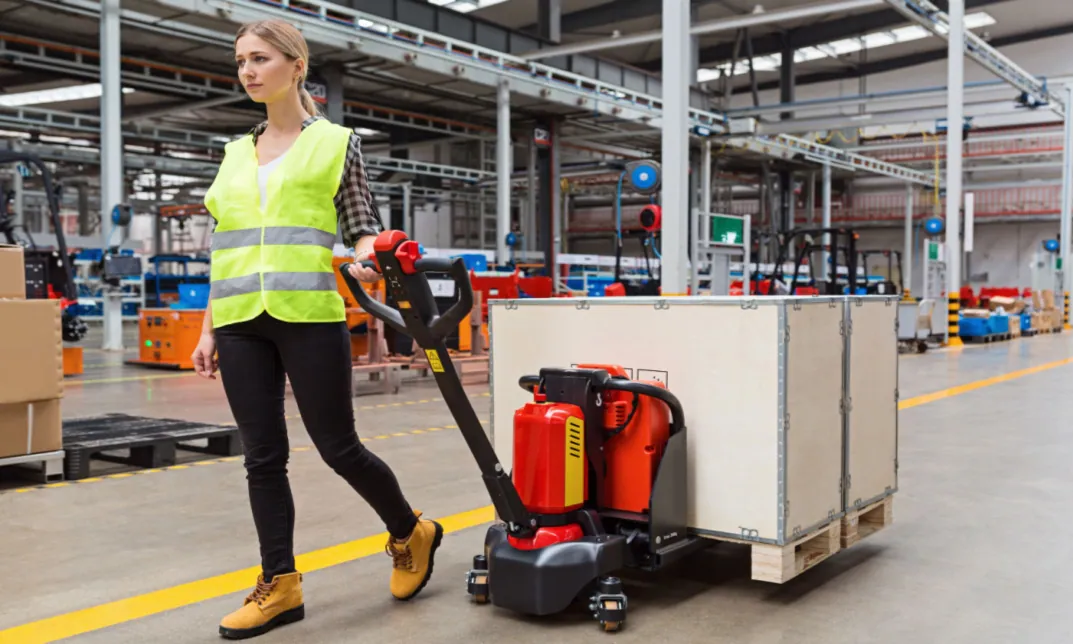Subtotal:
£129.95
Manual handling is any activity that uses human force to lift, lower, push, pull, carry, or restrain a load. Well, If you ever felt a soreness in your shoulder after a long day of filing, you’ve encountered the risks of manual handling.
In this blog post, we’ll explore why it’s important to be aware of and perform these tasks safely. We’ll also discover common manual handling activities, the potential hazards they pose, and the steps you can take to avoid injury. This can help you minimise the risk of injury and keep you moving confidently.
What is manual handling?
Manual handling is simply the act of lifting, carrying, pushing, or pulling things by hand. It’s common in jobs like moving boxes or furniture. But doing it wrong can lead to injuries. So, it’s important to learn the right way to lift and handle things safely. This might mean bending your knees when lifting and using equipment when possible. Training on safe manual handling is often provided in workplaces to keep everyone safe.
Why is manual handling important?
Neglecting proper manual handling techniques can have significant consequences. It might seem like a simple act, but safe manual handling practices are crucial for several reasons:
- Reduces Injury Risk: As we know, improper lifting techniques can put immense strain on your back, shoulders, and other muscles. This can lead to serious injuries like sprains, strains, and even chronic pain. By understanding proper techniques, you can reduce the risk of getting hurt.
- Boosts Productivity: When you’re constantly worried about injuring yourself, it can be hard to focus on the task at hand. Safe manual handling techniques allow you to work more efficiently and productively.
- Protects Your Wellbeing: Injuries sustained from poor manual handling can have a lasting impact on your overall well-being. It can also affect your ability to perform daily activities and even lead to mental health issues like stress and anxiety.
- Promotes Workplace Safety: In many workplaces, handling tasks are a major source of work-related injuries. By prioritising safe manual handling practices, employers can create a safer working environment for everyone.
In short, understanding manual handling is about protecting yourself and others from preventable injuries. It allows you to move with confidence and keeps you healthy and productive in the long run.
What are the Responsibilities of Employers?

This blog has focused on what manual handling is and how people can perform it safely. It is obvious that employers should recognise their employees. Here’s what employers are responsible for to ensure a safe work environment when manual handling is involved:
- Risk Assessment: This means identifying potential hazards like awkward postures, heavy loads, or slippery surfaces. Also, the associated risks of injury should be evaluated.
- Training and Instruction: Employers must equip their employees with the knowledge and skills for safe manual handling. It can be training on proper lifting techniques. Plus, understanding individual limitations to prevent overexertion.
- Providing Safe Work Systems: Creating a safe work environment extends beyond training. In fact, employers should provide appropriate tools and equipment to minimise manual effort.
- Monitoring and Review: Safe practices aren’t static. So, employers should regularly monitor how tasks are being performed and review risk assessments to ensure continued safety. This allows for adapting procedures as necessary and addressing any emerging issues.
How do the Manual Handling Regulations affect you?
Heavy lifting is all about moving things by hand or body power, like lifting, pushing, or carrying. There are rules to make sure these tasks are done safely, called the Manual Handling Operations Regulations.
Here’s what these rules mean for you at work:
- Your Responsibility: You have to follow these rules to help keep your workplace safe. That means doing manual handling tasks the right way and telling your supervisor if something seems risky.
- Training and Information: Your supervisor has to teach you how to handle things safely. They should also tell you about any risks with lifting and carrying stuff.
- Checking for Risks: Before you do any handling, your supervisor should look for risks and figure out ways to make things safer. You can tell them if you see anything that worries you.
- Using Tools: If there are tools or machines that can help you move things, your supervisor should give you training on how to use them properly.
- Health check-ups: If your job involves a lot of heavy lifting, your supervisor might offer health check-ups to make sure you’re okay. If you’re not feeling well, tell them so they can help.
- Getting Medical Help: If you hurt yourself doing manual handling, see a doctor as soon as possible. Your supervisor should help you get the right treatment and maybe adjust your work to help you heal.
Following these rules keeps you and your colleagues safe, making work a better place for everyone.
How to Avoid Manual Handling Injuries
Manual handling involves lifting, pushing, pulling, or carrying objects by hand or bodily force. While it’s a common part of many jobs, it can lead to injuries if not done safely. Here’s how to steer clear of manual handling injuries:
- Assess the Task: Before you lift anything, take a moment to assess the load. Check its weight, shape, and if it’s awkward to handle. Afterwards, if it seems too heavy or difficult, get help or use mechanical aids.
- Use Proper Lifting Techniques: When lifting, bend your knees, not your back. Keep your back straight and hold the load close to your body. Then, lift smoothly, using the strength in your legs, and avoid twisting your body while carrying the load.
- Get a Good Grip: Make sure you have a secure grip on the object before lifting it. Also, use both hands whenever possible, and if the load has handles, use them to improve your grip and control.
- Break It Down: If you need to move a large or heavy object, break it down into smaller, more manageable loads. This reduces the risk of strain and makes it easier to maintain good posture while lifting.
- Take Breaks: If you have to carry or move heavy objects for an extended period, take regular breaks to rest and stretch your muscles.
- Communicate: If you’re working with others, communicate clearly and coordinate your movements to avoid collisions or accidents. Moreover, use signals or verbal cues to alert your colleagues when you’re about to lift or move a load.
- Training and Awareness: Make sure you’re trained in proper manual handling techniques and aware of the risks associated with lifting and carrying objects. Also, attend any training sessions offered by your employer and ask for guidance if you’re unsure about how to handle a particular task.
Conclusion
Manual handling is a fundamental aspect of many workplaces. It involves the lifting, lowering, pushing, pulling, and carrying of objects by hand or bodily force. By understanding the principles of safe lifting and knowing your responsibilities, you can significantly reduce the risk of injuries. Also, keep in mind that manual handling practices benefit everyone. They keep you healthy and productive, protect your employees, and contribute to a safer work environment. After all, a healthy and pain-free you is a happy you!












